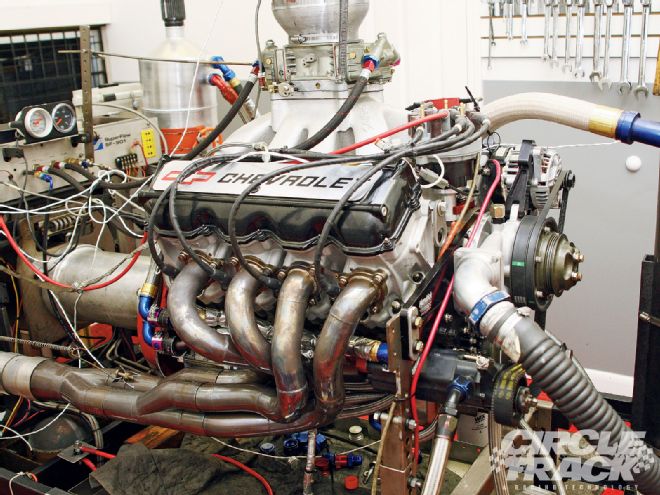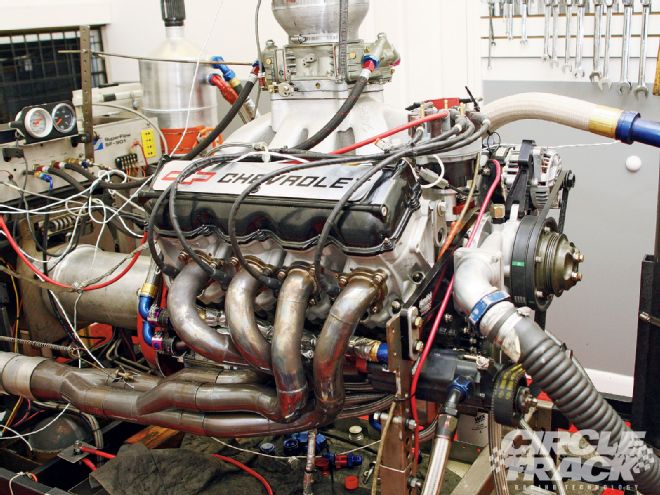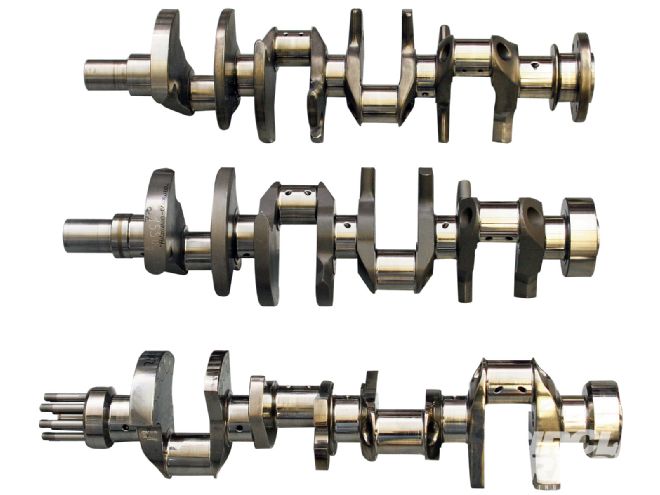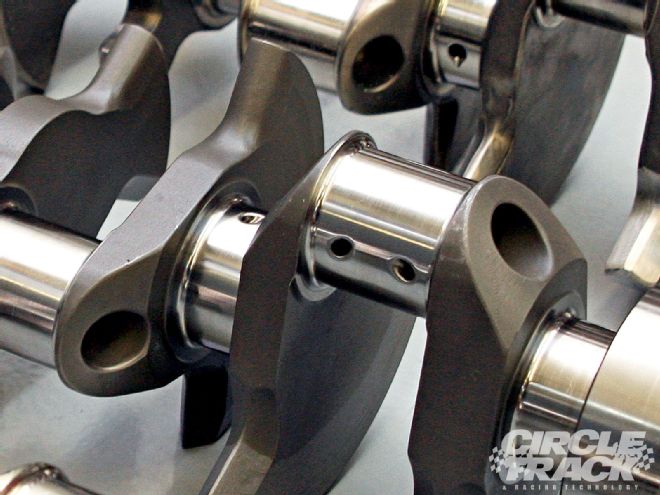
The only constant in racing is that it never stays the same.
 In racing, everything seems to eventually work its way through practically all the racing classes. After being raced in the NASCAR Sprint Cup Series exclusively shortly after its development was complete, Chevrolet's RO7 race-only engine is now seeing competition in the Nationwide Series. And while this block probably won't be allowed in your Street Stock any time soon, many of the better concepts incorporated in its design may soon start showing up in winning Saturday night race engines.
In racing, everything seems to eventually work its way through practically all the racing classes. After being raced in the NASCAR Sprint Cup Series exclusively shortly after its development was complete, Chevrolet's RO7 race-only engine is now seeing competition in the Nationwide Series. And while this block probably won't be allowed in your Street Stock any time soon, many of the better concepts incorporated in its design may soon start showing up in winning Saturday night race engines.
That may sound a bit like some Confucian aphorism, but it's the truth. Racing is always changing-competitors are constantly looking for new setups, tools, and methods to go faster and suffer fewer breakdowns. Likewise, manufacturers are constantly coming up with new components that are stronger, lighter, and simply better to help improve performance on the track. And as a result, sanctioning bodies are-you guessed it-constantly changing the rules in an attempt to keep up.
At Circle Track, part of our job is to keep you informed when it comes to those changes. Most of the time that involves showing you how to make the best use of the new stuff available to help you win races. But sometimes we also break out the old crystal ball to give you a glimpse into the future so you can prepare for that too.
A great example is Project G.R.E.E.N., our EFI/E85 race car build. Not too many of our readers can race a chassis with a '10 Camaro body and a repurposed Corvette engine, complete with fuel injection and data acquisition, but we bet that a lot more of you will be doing exactly that in the next few years.
And with that in mind, we're presenting "What's Next?"-a look into current-generation NASCAR Sprint Cup and Nationwide Series technology that may soon be making its way down to Saturday night racing. Now, we're not trying to tell you that Chevrolet's race-only RO7 block will be legal in your Street Stock class next season, but we do think that many of the fundamental ideas and theories for improving performance that have been included in the design of this motor will soon be seen in race engines at all levels.
 Here's a look at three different cranks that Doug Herbert Performance has for different purposes. Engine builder Ron Viccaro says while lowering overall weight is preferable, it's usually not as critical as lowering the rotating inertia-or weight on the extreme ends as the crank rotates. But most important of all is making sure there is enough material left on the crank to keep it as stable as possible. Any flex in the crankshaft kills power. That's why the more standard-looking cranks in the background are raced more often than the more radical crank in the foreground. Viccaro says if there is no damage, a crank will usually last around 6,000 miles before being replaced.
Here's a look at three different cranks that Doug Herbert Performance has for different purposes. Engine builder Ron Viccaro says while lowering overall weight is preferable, it's usually not as critical as lowering the rotating inertia-or weight on the extreme ends as the crank rotates. But most important of all is making sure there is enough material left on the crank to keep it as stable as possible. Any flex in the crankshaft kills power. That's why the more standard-looking cranks in the background are raced more often than the more radical crank in the foreground. Viccaro says if there is no damage, a crank will usually last around 6,000 miles before being replaced.
To find out more, we travelled to the shops of Doug Herbert Performance in Lincolnton, North Carolina. Doug Herbert is famous as a Top Fuel drag racer and the owner of a very successful performance parts sales operation. But he's also started High Energy Engines, a complete engine building operation that builds everything from parking lot cruisers for street rods to full-on race engines. But one of the most interesting aspects of the engine shop at Doug Herbert Performance (DHP) is it has also recently begun building top-flight race motors for NASCAR Nationwide and Truck Series teams.
Herbert says the plan is to stay small (at least compared to other Nationwide Series engine builders such as Hendrick and ECR) with a few core customers that it can concentrate on. By staying small, he says, it should allow his engine builders to make changes quickly any time they find something that can help improve power and/or durability.
Another interesting aspect of DHP's race engine program is it isn't tied to any manufacturer. Instead, it works with Fords, Chevrolets, and as this went to press, was even developing a Toyota program. While engine shops attempting this tactic have to be careful not to stretch their resources too thin, it also allows them the unique advantage of "seeing all the angles." In other words, a smart engine builder in this situation can compare the strengths and weakness of the different designs. He can also see how one brand may have solved a potential weakness and uses that concept to improve the same weakness in other motors.
 Small journals reduce surface area and bearing speed. NASCAR now limits the main journal diameter to 2.000 inches and the rod journals to 1.850, or teams would be pushing them even smaller.
Small journals reduce surface area and bearing speed. NASCAR now limits the main journal diameter to 2.000 inches and the rod journals to 1.850, or teams would be pushing them even smaller.
We were allowed full access into the engine shops at DHP and spent two days with engine builder Ron Viccaro picking his brain and essentially sticking our noses in anything and everything we found interesting.
In the future, we're hoping to tackle a few engine builds and other projects using the brainpower at DHP; but for now we wanted to give you an in-depth look at some of the things engine builders are using in the NASCAR Nationwide Series that may sooner or later make their way down to the Saturday-night level. If nothing else, this should at least give you an idea what areas top engine builders concentrate on with their own engines, so when you begin your next build you can do the same.